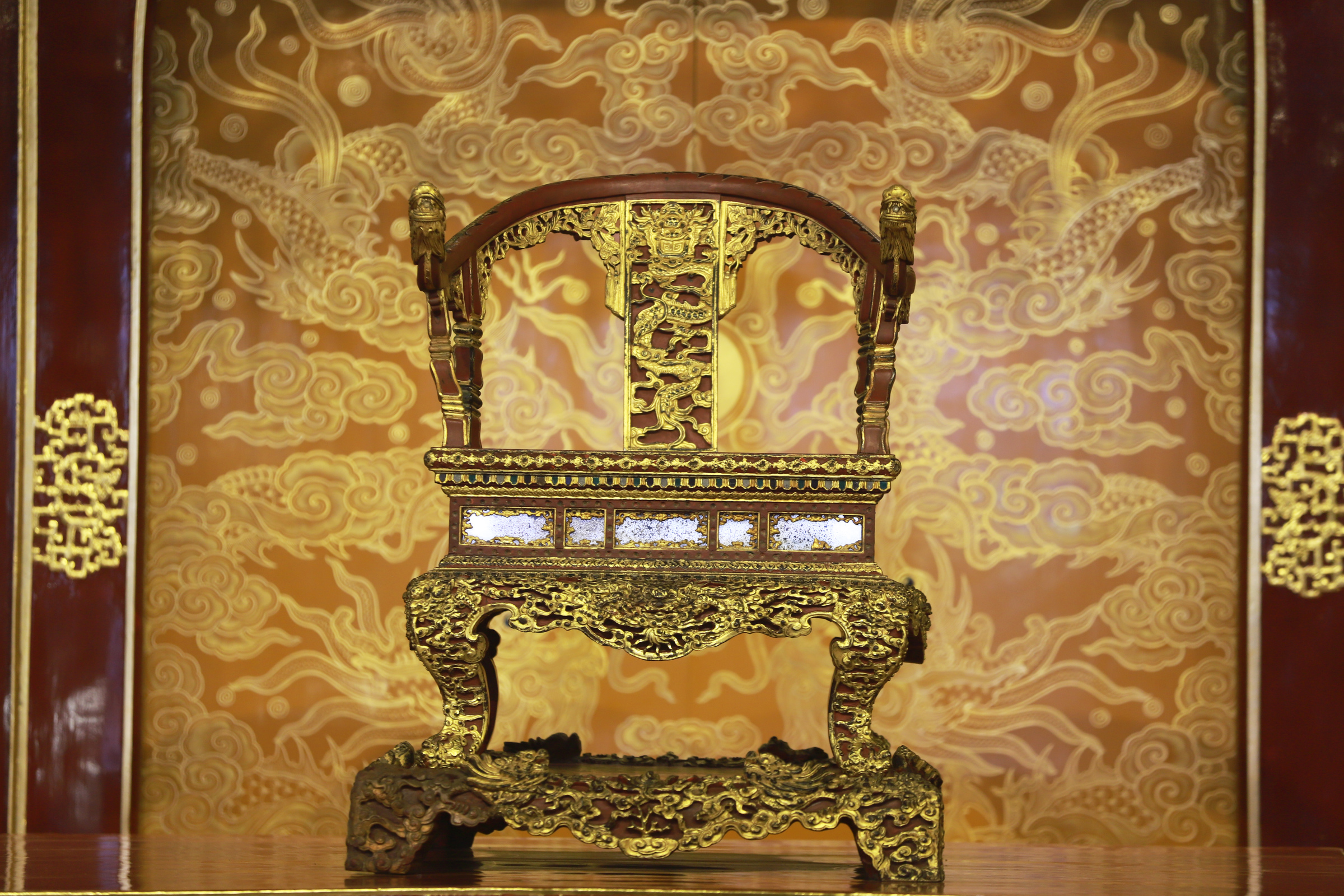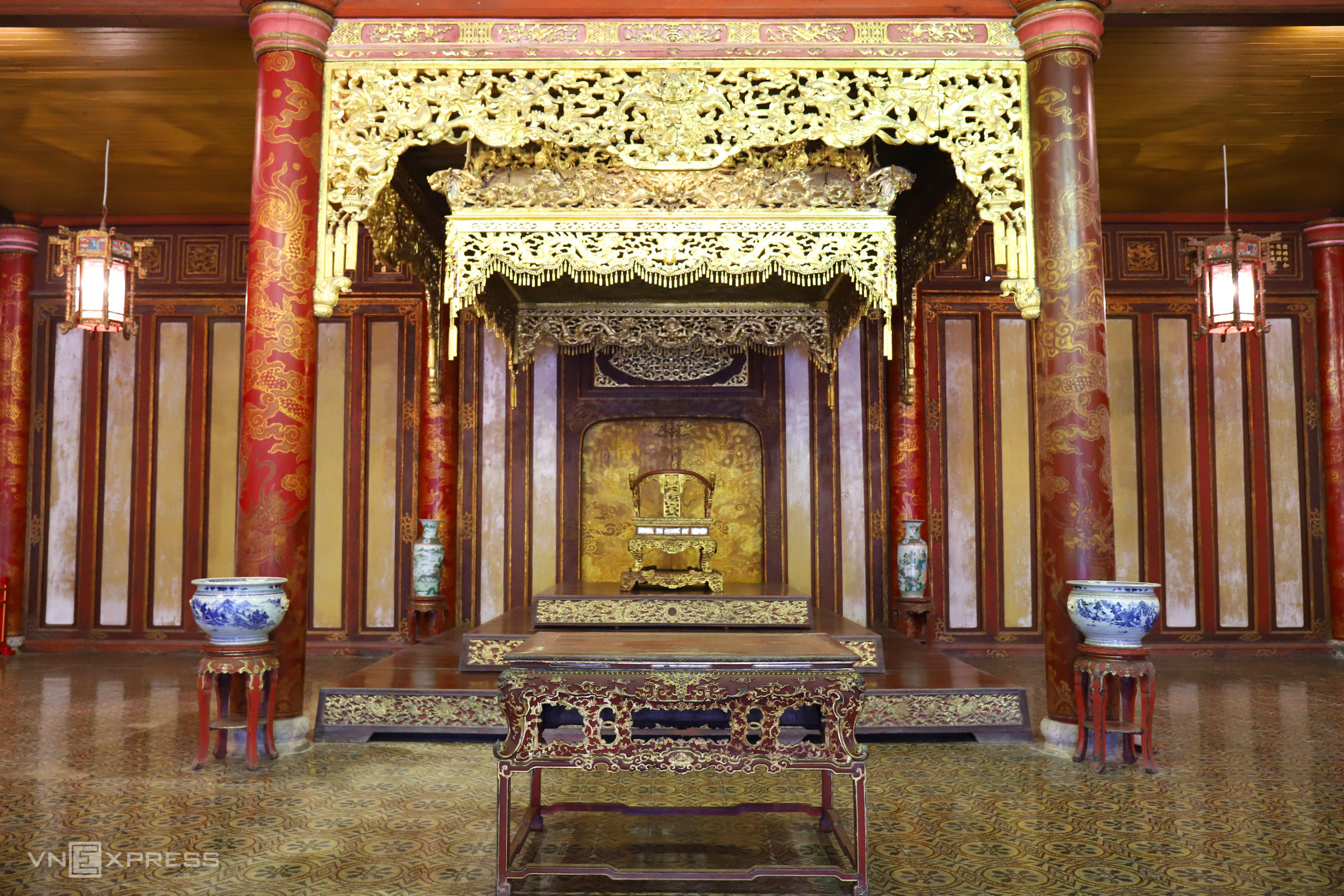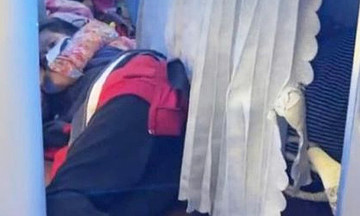On 11/8, Nguyen Thanh Binh, Vice Chairman of the Hue City People's Committee, signed a decision enacting the restoration plan for the national treasure, the Nguyen dynasty throne, after it was vandalized. The restoration will adhere to the approved design documents, aiming to return the throne to its condition as documented in 2015 when it was nominated as a national treasure.
 |
The Nguyen throne inside the Thai Hoa Palace before the vandalism. Photo: Vo Thanh |
The Nguyen throne inside the Thai Hoa Palace before the vandalism. Photo: Vo Thanh
The restoration will take place at the Hue Royal Antiquities Museum, which meets the security, lighting, and temperature requirements. The throne and its 14 fragments will be transported there, scientifically cleaned, and treated for mold, termites, and microorganisms.
The fragments will be reassembled using blueprints and 3D images. Missing pieces will be replaced with matching wood or a mixture of wood powder and paint. Broken joints will be restored using a "core replacement" method. The lacquer and gold leaf will be reinforced, with restoration limited to the damaged areas, using traditional techniques and referencing original documentation.
Finally, artisans will apply a thin, transparent protective layer to shield the throne from moisture, mold, and dust, avoiding a thick coating that could detract from its aesthetic value.
The Department of Culture and Sports is responsible for appraisal and submitting the plan to the City People's Committee for approval. They will also establish a specialized council to oversee the process. The Hue Monuments Conservation Center will manage the restoration, document the current state of the throne, film the entire process, and collaborate with the Hue Royal Antiquities Museum and consultants to ensure the authenticity, historical value, and aesthetics of the national treasure are preserved.
 |
The throne displayed in the Thai Hoa Palace. Photo: Vo Thanh |
The throne displayed in the Thai Hoa Palace. Photo: Vo Thanh
Ngo Van Minh, Director of the Hue Royal Antiquities Museum, stated that the 14 fragments of the Nguyen throne are currently being held by the police as evidence in the ongoing investigation. To restore the throne according to the plan, the museum will formally request the return of the 14 fragments from the police. Following this, a budget will be determined, and artisans will be commissioned for the restoration.
"The restoration of the Nguyen dynasty throne will be facilitated by the fact that the artisans who previously restored the throne, currently on temporary display at the Thai Hoa Palace, are available", Minh said.
The Nguyen dynasty throne at the Thai Hoa Palace is a unique artifact of significant historical and cultural value. The throne is 101 cm high, 72 cm wide, and 87 cm long. The base is 118 cm long, 90 cm wide, and 20 cm high. Above the throne is an ornate gold-leafed canopy. The entire structure is made of lacquered and gilded wood.
In 1/2016, the throne was recognized as a national treasure. However, on 24/5, Ho Van Phuong Tam, 42, entered the Thai Hoa Palace within the Hue Citadel, climbed over a protective barrier, and damaged several parts of the throne.
Vo Thanh












